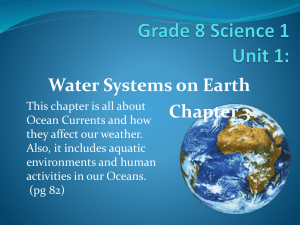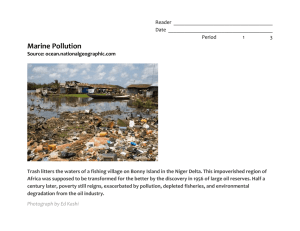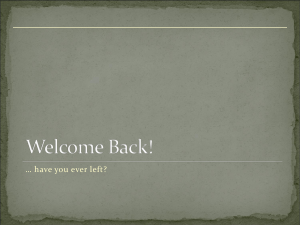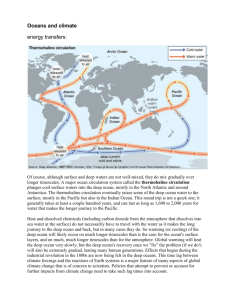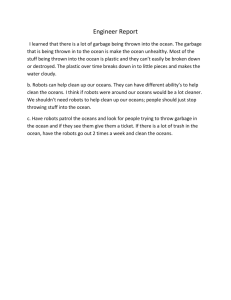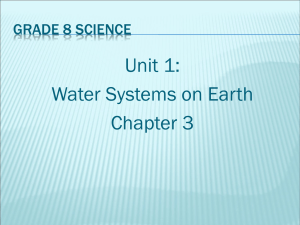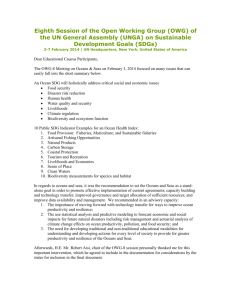Research Summary 3
advertisement
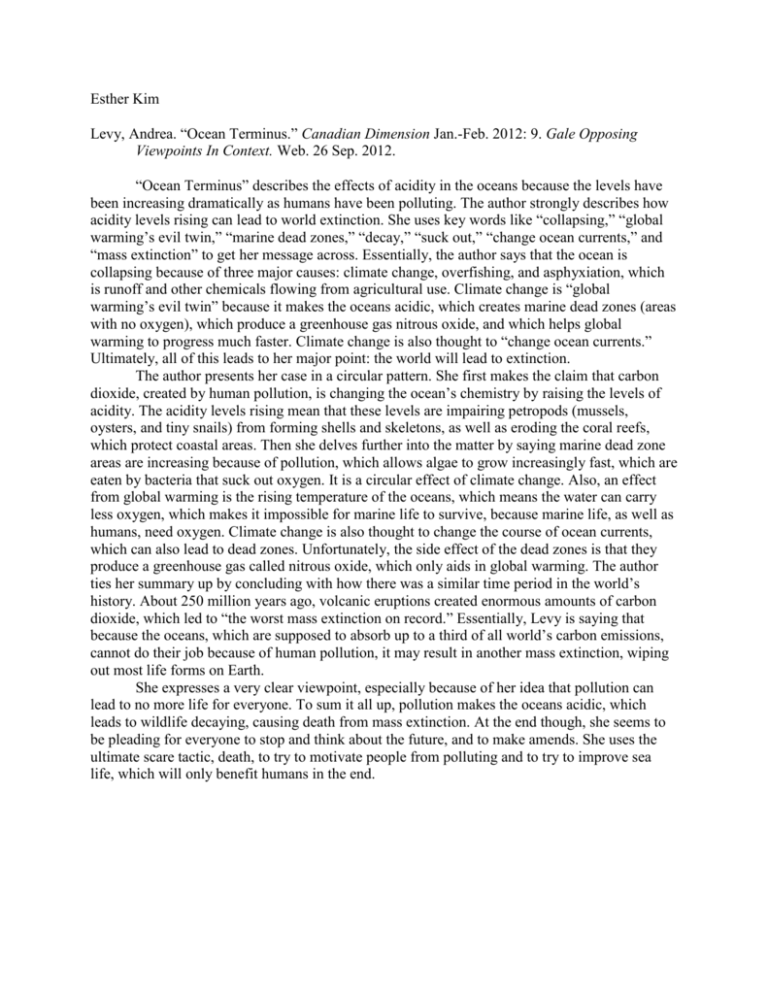
Esther Kim Levy, Andrea. “Ocean Terminus.” Canadian Dimension Jan.-Feb. 2012: 9. Gale Opposing Viewpoints In Context. Web. 26 Sep. 2012. “Ocean Terminus” describes the effects of acidity in the oceans because the levels have been increasing dramatically as humans have been polluting. The author strongly describes how acidity levels rising can lead to world extinction. She uses key words like “collapsing,” “global warming’s evil twin,” “marine dead zones,” “decay,” “suck out,” “change ocean currents,” and “mass extinction” to get her message across. Essentially, the author says that the ocean is collapsing because of three major causes: climate change, overfishing, and asphyxiation, which is runoff and other chemicals flowing from agricultural use. Climate change is “global warming’s evil twin” because it makes the oceans acidic, which creates marine dead zones (areas with no oxygen), which produce a greenhouse gas nitrous oxide, and which helps global warming to progress much faster. Climate change is also thought to “change ocean currents.” Ultimately, all of this leads to her major point: the world will lead to extinction. The author presents her case in a circular pattern. She first makes the claim that carbon dioxide, created by human pollution, is changing the ocean’s chemistry by raising the levels of acidity. The acidity levels rising mean that these levels are impairing petropods (mussels, oysters, and tiny snails) from forming shells and skeletons, as well as eroding the coral reefs, which protect coastal areas. Then she delves further into the matter by saying marine dead zone areas are increasing because of pollution, which allows algae to grow increasingly fast, which are eaten by bacteria that suck out oxygen. It is a circular effect of climate change. Also, an effect from global warming is the rising temperature of the oceans, which means the water can carry less oxygen, which makes it impossible for marine life to survive, because marine life, as well as humans, need oxygen. Climate change is also thought to change the course of ocean currents, which can also lead to dead zones. Unfortunately, the side effect of the dead zones is that they produce a greenhouse gas called nitrous oxide, which only aids in global warming. The author ties her summary up by concluding with how there was a similar time period in the world’s history. About 250 million years ago, volcanic eruptions created enormous amounts of carbon dioxide, which led to “the worst mass extinction on record.” Essentially, Levy is saying that because the oceans, which are supposed to absorb up to a third of all world’s carbon emissions, cannot do their job because of human pollution, it may result in another mass extinction, wiping out most life forms on Earth. She expresses a very clear viewpoint, especially because of her idea that pollution can lead to no more life for everyone. To sum it all up, pollution makes the oceans acidic, which leads to wildlife decaying, causing death from mass extinction. At the end though, she seems to be pleading for everyone to stop and think about the future, and to make amends. She uses the ultimate scare tactic, death, to try to motivate people from polluting and to try to improve sea life, which will only benefit humans in the end.
